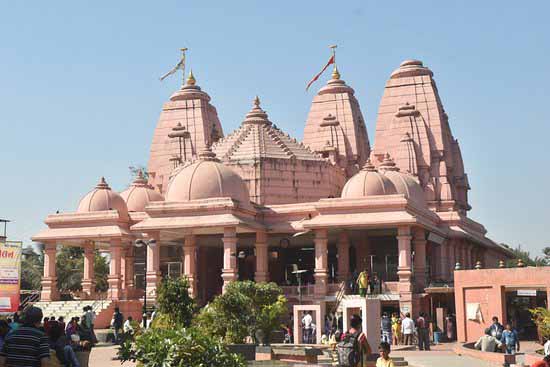Shabri Dham Temple

Information of Shabri Dham Temple, Dang, Gujarat
Shabari Dham is a popular Hindu temple which is located in Subir village in Saputara district of Gujarat. The temple was created in the year 2004 on the top of a small hill. Shabari Dham has rich mythical basis of divinities and devotees are being blessed with its long run influence. The temple is associated with a tale of Ramayan and is visited by people on daily basis. Shabari Dham has also added to the heritage place due to its beautiful location and it has proudly become a cultural location of India.
Shabri Dham Temple Religious Significance
Shabari Dham is a green and peaceful place for devotees. Additionally for people who are motivated to take a religious tourism, Shabari Dham can be a proper spot. It is believed that Shabari Dham is the location where lord Ram met with Shabari, a tribal girl, who had been worshipping lord Ram for long time with extreme devoutness in order to meet him.
There is a small shrine which stands in the hill of Subir village which was considered as the place where Shabari lived. On moving toward the base of the hill, there are few berry trees which support the legendary claims of the temple.
Every year, Shabari Dham organises Ram festival which is quite popular among devotees. On that occasion thousands of devotees come to visit the temple. Moreover, on regular basis, around 200 devotees visit Shabari Dham. In weekend time, the number of visitors to the temple increase to about 2000. Shabari Dham also organise fair named Kumbh mela in the month of January. The first Kumbh mela was arranged in the year 2006. Considerable number of Hindu pilgrims come to attend this festival from various part of India, which is celebrated in a grand and outstanding way.
Shabri Dham Temple Mythology & History
There is a great tale regarding the creation of Shabari Dham. In accordance with Ramayana, when lord Ram was pursuing her kidnapped wife Sita, he passed through a forest named Dandakaranya. In the forest lord Ram met one of his great devotees Shabari. She offered lord Ram with some wild Berry fruit, but only after ensuring that they were sweet. It is stated that after Shabari served lord Ram with fruits, he blessed her and inquired for the way demon Ravan abducted his wife. Shabari pointed out the way to lord Ram which directed him to a forest where lord Ram met with his most favourite devotee lord Hanuman and lord Sugreev. The dense forest is believed to become the place where Shabari Dham was created in later days. According to legend, lord Ram, Lakshman and goddess Sita passed through Shabari Dham after 14 years of outcast. Its mythological importance is well connected with the time of Ramayana and thus its cannot be consider the fact the temple is of immense importance and carries the holiness of the era where Rama once came to fight with all the odds to make this world peaceful and too keep it holy.
Shabri Dham Temple Architectural Significance
Shabari Dham is quite small, having simple architectural style. However, the temple has amazing sketches which is associated with the particular episode of lord Ram and Shabari. The main compartment of Shabari Dham has statues of lord Ram, Lakshman and Shabari. In front of the three statues there are three rocks. These rocks are apparently intended to be the seats for lord Ram, Lakshman and Shabari. Among the three rocks, it is stated that lord Ram sat on the big rock, while Lakshman sat on the medium sized rock and Shabari sat on the smaller rock. These rocks are also worshipped by the devotees.
Legend tells that Shabari Dham was the forest where lord Ram spent considerable time during his 14 years of exile from the kingdom. Near Shabari Dham, there is a river named Pampa Sarovar, where Shabari is supposed to take bath. Moreover, monkey lord Hanuman is also thought to take bath on that river. There are many teak and bamboo tree around Shabari Dham which provides the temple an arboreal appearance. In the year 2004, an open hall was created in the temple where various religious activities are held.
- Andhra Pradesh Temples
- Assam Temples
- Bihar Temples
- New Delhi Temples
- Goa Temples
- Gujarat Temples
- Jammu and Kashmir Temples
- Karnataka Temples
- Kerala Temples
- Madhya Pradesh Temples
- Maharashtra Temples
- Odisha Temples
- Punjab Temples
- Rajasthan Temples
- Sikkim Temples
- Tamil Nadu Temples
- Telangana Temples
- Uttar Pradesh Temples
- Uttarakhand Temples
- West Bengal Temples